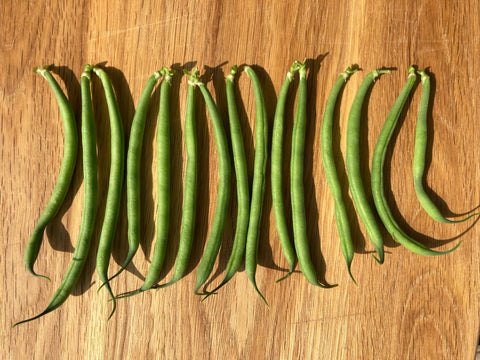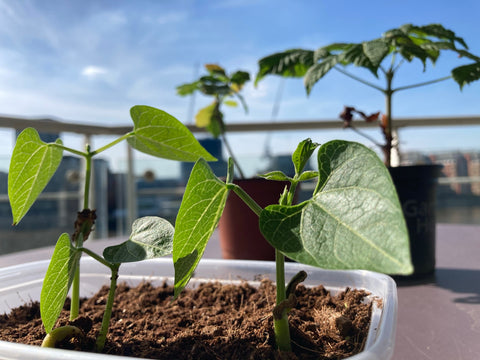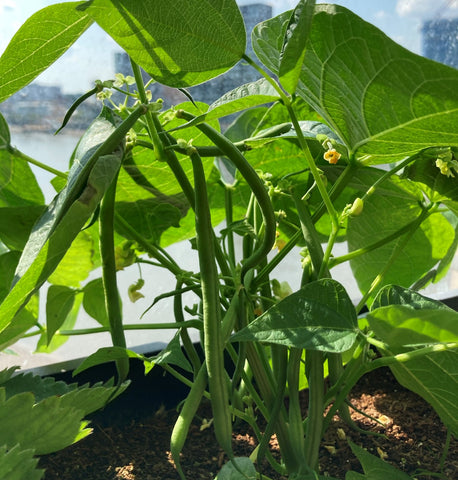The Fantastic French Bean

The Eiffel Tower, croissants, red wine… there are many things that come to mind when we think of the French, but all of them pale in comparison to French beans. These long, thin, humble beings are just a delight in the garden, and even more so on the plate.
Paradoxically, French beans aren’t actually French! They’re believed to have originated in Central and South America, and some evidence suggests they have been harvested for over 5,000 years. That’s a lot of beans!
The Fantastic French Bean is our pick for September.
Grow
The trickiest part about growing French beans is germinating the seeds, so it’s always a good idea to sow a few spares just in case. Like tomatoes, they’re another vegetable that benefit from being sown indoors prior to planting them in larger pots outdoors - it gives them the head start they need!
Once they’re up and running though, nothing can stop them. In the first six weeks, the plants fill out and grow lots of leaves, and after this you’ll start to see the first flowers. Each of these flowers gets pollinated and turns into a singular bean. The beans will grow to full size within about two weeks after their first appearance.

Harvest
Your job is simple- pick each bean before they get too big! You don’t want them to grow thicker than about 1cm - most varieties are around 10cm long by the time they reach this thickness.
Harvest your French beans by pinching off the stalk that attaches the bean to the plant.
Remember: by continually harvesting the beans, you’re giving your plant a nudge to grow more, so never hold back when it comes to picking them off your plant!

Eat
Homegrown French beans can’t be beaten.
Blanched and then gently fried in butter, as the French do, makes a great summer side dish. You can also create a simple salad by blanching your beans and dressing in 100ml crème fraiche, 2 tsp lemon juice, 1 tbsp wholegrain mustard and ½ tsp honey.
Whilst their adaptability means they get along with any dish, they can also be the star of the show. Take Ottolenghi’s French beans and mangetout with hazelnut and orange.
Or for a hearty supper, Romy Gill’s French bean and potato sabzi.

